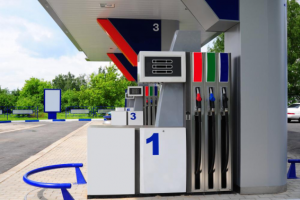Industry compliance is probably the biggest challenge that you face as a gas station owner, when running a service station business.
However, it’s not hard to understand why the industry is highly regularized and monitored, since gasoline and other petroleum products have environmental and fire safety risks. As such, it’s the responsibility of every gas station owner to take every possible step to mitigate the risk of accidental spills and leaks at their facility.
In the above-mentioned context, fuel dispensers qualify as a service station equipment of utmost importance. After all, it’s these dispensing machines that people use to fill up their gas tanks on day to day basis, and hence, a potential mishandle or a unit malfunction can be costly.
Therefore, a regular inspection of fuel dispensing machines and the area surrounding it is essential.
To serve the purpose, the team of John W. Kennedy Company has prepared a safety checklist for gas station owners, following which, they can ensure safe and efficient fuel dispensing operations at their service station.
 Regularly Test Emergency Stop System
Regularly Test Emergency Stop System
Every fuel dispenser is fitted with an “Emergency Stop” system. This system serves as an electrical disconnect system, which cuts off voltage supply to all the circuits powering the fuel dispensing machine.
A working Emergency Stop system helps prevent fire breakouts and protects people against the potential of a shock.
Do Not Store Any Containers on the Dispenser Island
Dispenser island is the platform on which your fuel dispensing machine stands. Sometimes, your working staff may place or store containers on it.
Since dispenser island is a high activity area, it’s quite likely that a container may get toppled over, leading to costly accidents. It’s important that your dispenser island is clear of all the storable and accidentally placed cans.
Check the Dispenser Hoses for Any Signs of Damage
Inspect all dispenser hoses for flattened areas, cuts, leakages and cracks. If you find a damaged hose, repair or replace it—as deemed necessary.
Check the Fuel Nozzle Safety Features
Fuel nozzles are part of a fuel dispensing machine. They come equipped with essential safety features to prevent accidental spills and breakaway damages. Every morning, before opening your service station for operation, check the fuel nozzle safety features.
Ensure that the gas station breakaways, No Pressure-No Flow mechanism and the automatic shut off mechanism are working.
Periodically Check the Fuel Dispenser Assembly
The fuel dispenser assembly includes pipe fittings, shear valves, fuel filters, leak detection sensors, dispenser lines and cathodic protection systems. It’s important that you periodically check the fuel dispenser assembly at least once a week to ensure that everything is working fine.
All the Warning Signages are Easy to Read
All warning signage, installed around your fuel dispensing machines, must read clearly. They should be strategically placed, so that everyone present in the fuel dispensing area can read them.
If there is a damaged signage or one that is not visible enough, act accordingly.
Keep this checklist with you in your office and record the entailing activity in a log book for a robust monitoring system.
In Search of a Gas Station Essential That Needs Replacing?
We can help you. At John W. Kennedy Company, we stock high quality petroleum equipment and gas station supplies, providing everything that you need to run your service station smoothly, efficiently and safely. You can place your order online and we will deliver you at your doorstep.





 Regularly Test Emergency Stop System
Regularly Test Emergency Stop System